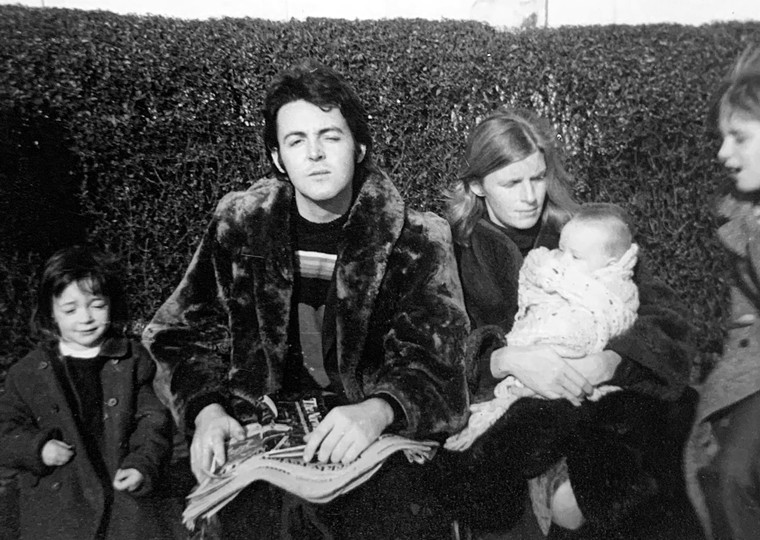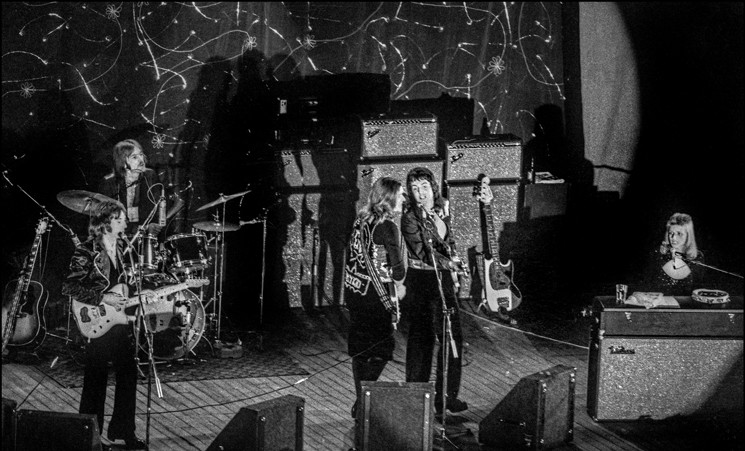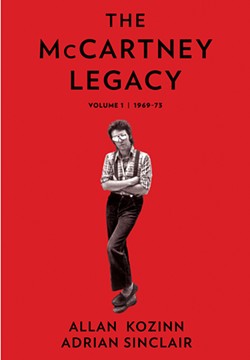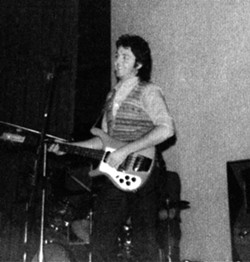Well…yes. That’s the charge, challenge, and expertly delivered goods of Allan Kozinn and Adrian Sinclair. The music journalist and documentarian respectively have dropped first massive tome in a planned series focusing on Paul McCartney’s post-Beatles era in The McCartney Legacy, Volume 1: 1969-1973 (720 pp., $35, Dey Street Books).
And while the subject himself declined to speak with the pair (McCartney has kept away from biographers, though he did tacitly contribute to friend Barry Miles’ 1997 bio Many Years from Now), he gave implied permission for others to speak with the authors.
That resulted in scores of fresh interviews for the book, and the authors drew on their own archive of tens of thousands of McCartney’s print, audio, and video interviews. They also had access to or uncovered thousands of never-before-seen documents.
The book begins with the death spasms of the Fabs, setting the stage where McCartney not only left the group publicly first, but was essentially forced to sue his three bandmates (who were spellbound by the highly questionable influence of manager Allen Klein) to legally dissolve the group.
Things pick up steam as McCartney alternately stews at his perceived post-breakup treatment, attempts to make a solo musical mark, and involve new wife (and non-musician) Linda in a way that was not a copy of what John and Yoko were doing.
After releasing the solo efforts McCartney and Ram, he decided to form an actual group, Wings. The band’s impromptu barnstorming of UK colleges—pulling up in a van, offering to play a show the next night for a cut of the cover charge, then leaving—was unprecedented and daring. Many a students in February 1972 were shocked to see a Living Beatle playing their campus club or theater.
During this time, many a music journalists faced the duality of Paul McCartney: The guy could come off as both an attentive, average bloke providing humor, insight and access if you liked you, but could turn vitriolic (and with a long, long memory) if he didn’t.
He once referred to his dual personality (perfect for the Gemini): There was the “Him” that was “Paul McCartney, Rock Superstar” in public and the “Me” who was “The Real Guy Family Man” in private. He always wanted to please but if pushed too far, could snap. Understandable at times, like when 20 girls would simply loiter outside his front door all day and night, sometimes hurling verbal abuse at Linda.
Both were on display during a famous and telling incident that took place in the Scottish countryside at McCartney’s High Park Farm on November 2, 1969. An intrepid reporter and photographer from Life magazine had tracked the reclusive Paul down to discuss the then-rampant “Paul is Dead” rumors.
Going through a bit of a mental breakdown himself and just wanting to be left alone, McCartney was shocked to see the pair show up uninvited. He instinctively threw a buck of horse slop at them, cursed them out, and ordered them to leave. But not before the photographer snapped a couple of pictures of the angry and confrontational soon-to-be former Beatle.
Realizing the PR disaster that could follow (and worrying about the pictures), an All-Apologies McCartney got in a vehicle, chased the duo down, and offered a deal: He’d give them a short interview and pictures taken of his family by Linda, in exchange for the possibly damaging film in the camera. And Life got the interview and some pastoral family pictures.
In the biographical pieces, there are plenty of new nuggets for even the most hardcore fans. Like an early name for Wings was Paul’s preferred “The Dazzlers."
And the authors both discover the true stories and overturn myths about McCartney’s political activism, deeper ties between his life and songs, Linda’s actual role in the songwriting, the ugly truths about Wings’ 1972 European Tour, and how the James Bond theme “Live and Let Die” almost didn’t happen.
On that last one, co-producer Harry Saltzman suggested upon being given McCartney’s finished song that…Thelma Houston sing it instead. Because no man had ever sung a James Bond theme before! (though here there are even different versions of that story).
The book also goes deep into the understood dissatisfaction that Paul’s Wings bandmates—the ones who were not married to him—felt about lack of compensation, ownership, and creative input. Granted, any band started, bankrolled, and featuring an ex-Beatle was not going to be a democracy.
But McCartney’s early promises to Henry McCullough, Denny Laine, and Denny Seiwell never quite materialized. And any band conflict was always going to end with the team of Paul and Linda (whose admittedly barely-there musical skills were cause for public and private grumbling) emerging victorious. The authors had access to the private diaries of both Seiwell and his wife and are enlightening.
One thing that really sets this book apart is Kozinn and Sinclair’s unprecedented amount of detail on every single Paul McCartney solo recording session: dates, places, songs worked on, remembrances from those in the room, and lots of equipment detail.
Sometimes, a more casual reader may likely skim through some of this. Unless you really need to know that on November 6, 1970, at CBS Studios B, the proposed third movement of “Uncle Albert/Admiral Halsey” was titled “Gypsy Get Around” and ran from 3:26 to 3:49. Or, say, that producer Tony Visconti showed up at 10 am on October 17, 1973, in London’s AIR Studios One to work on overdubs for Band on the Run.

Paul, Linda, and daughters (l to r Mary, Stella, Heather) in Scarborough, 1972.
Photo by Stuart Cameron
All in all, Kozinn and Sinclair hope to eventually do a deep, deep dive into the post-Beatles work of Paul McCartney the way that Mark Lewisohn (currently working on the second of three massive books) is doing for the Beatles years.
So, does the world need another book about Paul McCartney? If it’s The McCartney Legacy, I say, say, say…yes! And there's still 50 more years to go!





